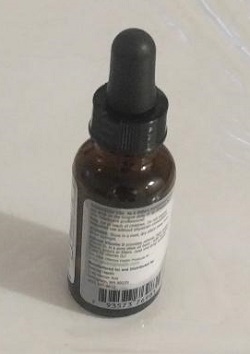Update: November 2022 — An interesting new paper titled “Biomaterials for treatment of baldness” just got published. They used finasteride-loaded poly D,L-lactic-co-glycolic acid (PLGA) naoparticles to deliver finasteride locally to the scalp. The drug can penetrate more easily and remain in the acting site for a longer duration of 5-6 weeks.
Update: October 2022 — Chinese researchers have bioengineered polyester nanoparticles for the synergistic treatment of androgenic alopecia. They do this via the 1) Supression of 5α-reductase (via Dutasteride in this case); and 2) Knockdown of the androgen receptor. The delivery technology utilized is called PLGA-DUT/siAR@DPCM nanoparticles. Dutasteride and siAR are both delivered topically to dermal papilla cells.
Update: July 2021 — Sustained release of topical finasteride via novel tip-loaded dissolving and implantable microneedle array patches.
I have covered topical finasteride for hair loss at regular intervals on this blog. Many of us are eagerly awaiting the final results from Polichem’s P-3074 Phase 3 clinical trials. Those trials ended in March 2018 and involved a sizable 459 male participants.

More importantly, a number of hair transplant surgeons and pharmacies have in recent years started compounding their own version of topical finasteride.
In rare instances, they are even making the stronger topical dutasteride. Almost all local compounding pharmacies in the USA are able to make their own in-house topical finasteride.
From what I have read online and after calling several local pharmacies, it seems like gel-based topical finasteride is the most popular current topical option. Finasteride gel and finasteride tablets showed similar hair growth success rates per this 2009 study from Iran.
You can also get topical finasteride in various liquid solutions; creams; lotions; ointments; pastes; aerosol sprays; microsponges; and more.
Topical Finasteride Drug Delivery
It seems like there are numerous ever increasing potential ways in which to deliver topical finasteride to the scalp. Each drug delivery mechanism not only impacts final hair growth results, but also side effects. The ultimate aim in creating both topical finasteride and topical dutasteride is to drastically reduce potential side effects from the oral versions.
Update: New article summarizing novel topical hair loss drug delivery systems. Mechanisms of delivery include via:
- Microneedling.
- Laser.
- Radio-Frequency.
- Ultrasound Sonophoresis.
- Iontophoresis.
- Nanoparticle Delivery.
“What I foresee for the future is a delivery system that allows not only selective targeting, but also very prolonged delivery.”
Nanoparticle Delivery of Finasteride
2013 (South Korea): Enhanced topical delivery of finasteride using Glyceryl Monooleate-Based Liquid Crystalline Nanoparticles.
2014 (Brazil): Nanotechnology in Dermatology.
2017 (UK): Preparation and characterization of dutasteride-loaded nanostructured lipid carriers.
2018 (Brazil): Nanotechnology advances for hair loss.
2020 (Brazil): Novel iron oxide nanocarriers loading finasteride or dutasteride.
Chitosan
2008 (EU): Original Polichem patent on a chitosan-based delivery system for topical fin.
2020 (Brazil): Nanocapsules with chitosan-coating and dutasteride hair follicle targeting.
Liposomal
2007 (India): Development of liposomal systems of finasteride for topical applications.
Laser-Assisted
2018 (Brazil): Fractional non-ablative laser-assisted delivery.
Iontophoresis delivery of finasteride is also being researched. Some of the above methods can overlap with each other or be used in combination. I have not tried to put too much effort into the science for the time being, and will probably expand this post in the future.
If you have tried using topical dutasteride or finasteride, do comment on how you obtained the product. And if possible, the format (gel, solution, cream) and carrier vehicle. Did you see reasonable results? Any side effects?